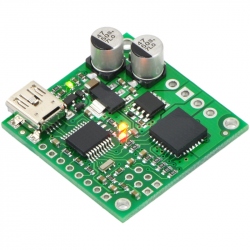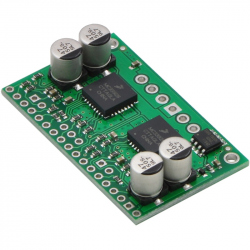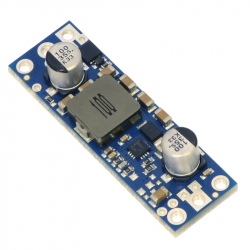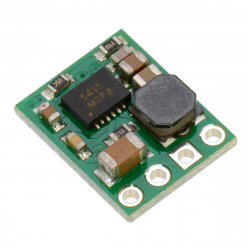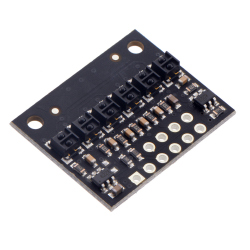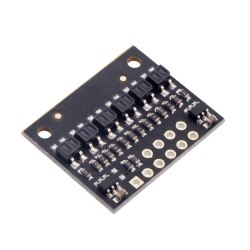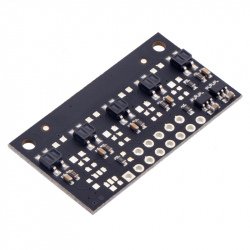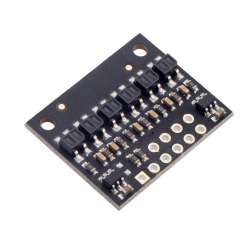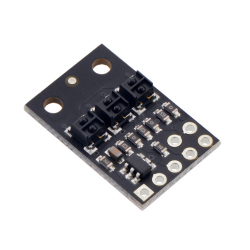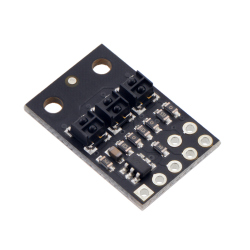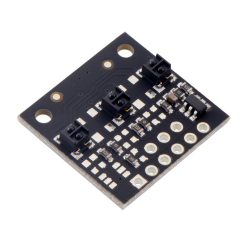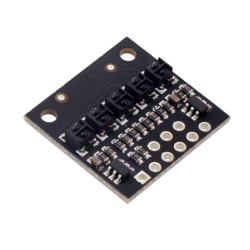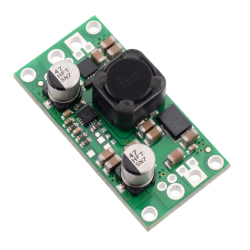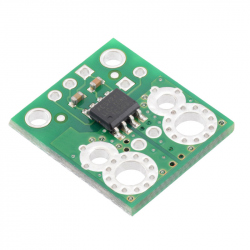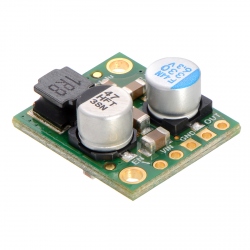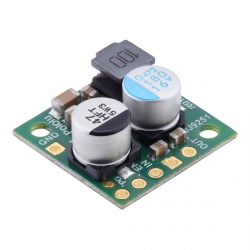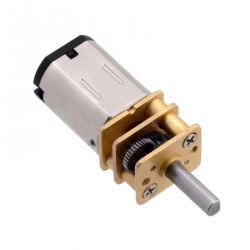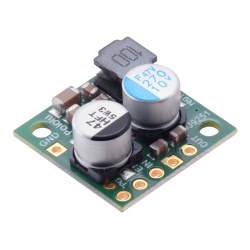Dupa plasarea solicitării de comandă, in sectiunea Istoric puteti vedea cate solicitări de comandă mai avem de procesat inaintea dumneavoastra
Program de lucru: Luni - Vineri 8:30 - 17:30, pauza 12:30 - 13:30.
Se efectueaza lucrari de mentenanta la site si pot aparea erori. In cazul in care intampinati erori va rugam sa reincercati mai tarziu.
Ridicarea personala este disponibila pentru comenzile achitate in avans. Se pot ridica dupa ce sunt pregatite.
No products
Categories
- Stock Clearance
- All Products
- Accesories
- GSM Accessories
- Aeromodels
- Adapters and Converters
- Test and Measurement
- Audio
- Batteries
- BBC Micro:Bit
- Cables
- Cameras
- Cases
- Computer parts
- Electronic Components
- Connectors
- Consumables
- Car Diagnosis
- Power Electronics
- Wires
- Flotilla
- Gadgets
- GPS
- 3D Printers
-
Filaments
- ABS Filaments
-
PLA Filaments
- Classic PLA Filaments
- EasyPrint PLA Filaments
- HD PLA Filaments
- Easy PLA Filaments
- Mineral PLA Filaments
- PLA PRO Filaments
- Ingeo 3D850 PLA Filaments
- Ingeo 3D870 PLA Filaments
- PHA / PLA Filaments
- Glitter PLA
- Premium PLA
- EasyFil PLA
- GalaxyPLA
- Volcano PLA
- Armour-D PLA
- Silk Gloss PLA
- Matt PLA
- ReForm rPLA
- MagicFil Thermo PLA
- PLA Special Filament
- High Speed PLA
- Chameleon PLA
- Nylon Filaments
- PETG Filaments
- ASA Filaments
- HIPS Filaments
- Lemn Filaments
- Metal Filaments
- Glossy Polymer Filaments
- Carbon Fiber Filaments
- PVA Filaments
- Flexible Filaments
- Other Filaments
- Coating Liquid
- Co-polyesters Filaments
- Composite Materials Filament
- STYX-12
- Thibra3D Skulpt
- Arnite® ID 3040
- Novamid® ID 1030 (PA6/66)
- Poliamide
- Magnets
- Mechanics
- Memories
- Motors
- Optoelectronics
-
Development Boards
-
Arduino Compatible Boards
- Compatibile with Arduino UNO
- Compatibile with Arduino MEGA
- Compatible with Arduino Nano
- Compatible with Arduino Pro Mini
- Compatible with Arduino Pro Micro
- Compatible with Arduino DUE
- Compatible with Arduino Leonardo
- Compatibile cu Arduino Zero
- Compatible with LilyPad
- Adafruit Feather
- Adafruit Trinket
- Others
- 8051 Boards
- ARM Boards
- AVR Boards
- ESP8266 Boards
- ESP32 Boards
- FPGA and CPLD Boards
- LoRa Boards
- MBED Boards
- ODROID Boards
- PIC Boards
- Bluetooth Boards
- GPS Boards
- GSM and GPRS Boards
- WiFi Boards
- Orange Pi
- Pycom Boards
- Others
-
Arduino Compatible Boards
- Programmers
- Prototyping
- Robotics
- Raspberry Pi Zero
- Raspberry Pi
- Sensors
- Surveillance Systems
- Arduino Shields
- Battery Holders
- Tools
- Wearables
- Wireless
- Others
- Kits
- Resealed
- Storage systems
- Flotilla modules
Manufacturers
-

Proxxon 28234 - Ball-Shaped Diamond-Coated Grinding Bits for Glass and Stone Ø3,2mm, 2pc/set
Proxxon 28234 - Ball-Shaped...
$4.63 $5.11
Viewed products
-

2 x 8p 2.54 mm Female...
2 x 8p Female Pin Header 2.54 mm See...
-

Electrolytic Capacitor...
Electrolytic Capacitor 10 uF, 400 V
-

Pot Magnet...
Pot Magnet 40x10.6/5.5x8 mm...
-

Screws for Micro N20...
Screws for Micro N20 Gearmotor (4 pcs...
-

Gearmotor Mounting...
Gearmotor Mounting Bracket Step by...
-

3D High Speed PETG...
3D High Speed PETG Filament 1.75 mm 1...
Search "pololu" 22 results have been found.
-
U1V11F3 Pololu 3.3V Step-Up Voltage Regulator
This compact (0.45"x0.6") U1V11F3 switching step-up (or boost) voltage regulator efficiently generates 3.3 V from input voltages as low as 0.5 V. Unlike most boost regulators, the U1V11F3 offers a true shutdown option that turns off power to the load, and it automatically switches to a linear down-regulation mode when the input voltage exceeds the output....
$22.56In Stock -
Pololu Driver Jrk 21v3 USB with Feedback
The Jrk 21v3 motor controller is a highly configurable brushed DC motor controller that supports four interface modes: USB, logic-level serial, analog voltage, and hobby radio control (RC). The controller can be used with feedback for closed-loop speed or position control, or it can be used without feedback as an open-loop speed control. The continuous...
$96.00In Stock -
Pololu Dual MC33926 Motor Driver Carrier
This dual brushed DC motor driver, based on Freescale’s MC33926 full H-bridge, has a wide operating range of 5 V to 28 V and can deliver almost 3 A continuously (5 A peak) to each of its two motor channels. The MC33926 works with 3 V to 5 V logic levels, supports ultrasonic (up to 20 kHz) PWM, and features current feedback, under-voltage protection,...
$76.56In Stock -
Pololu 24V Step-Up Voltage Regulator U3V50F24
This powerful boost regulator efficiently generates an output voltage of 24 V from an input voltage as low as 2.9 V while allowing an input current as high as 5 A. See description for more details about the product. Add to cart now!
$57.36In Stock -
Pololu D24V5F15 15V, 500mA Step-Down Voltage Regulator
The compact (0.4" x 0.5") D24V5F15 synchronous buck voltage regulator takes an input voltage of up to 36 V and efficiently reduces it to 15 V while allowing for a maximum output current of 500 mA. This regulator offers typical efficiencies between 90% and 95% and has a very low dropout, so it can be used with input voltages as low as a few hundred...
$6.00 $7.20In Stock -
QTRX-HD-06RC Reflectance Sensor Array: 6-Channel, 4mm Pitch, RC Output, Low Current
This array of IR LED/phototransistor pairs is great for precisely identifying changes in reflectance (like line detection). It operates from 2.9 V to 5.5 V and offers dimmable brightness control independent of the supply voltage and separate controls for the odd and even emitters. In general, the closer the object, the higher the contrast between light...
$8.40In Stock -
QTR-HD-06A Reflectance Sensor Array: 6-Channel, 4mm Pitch, Analog Output
This array of IR LED/phototransistor pairs is great for precisely identifying changes in reflectance (like line detection). It operates from 2.9 V to 5.5 V and offers dimmable brightness control independent of the supply voltage and separate controls for the odd and even emitters. In general, the closer the object, the higher the contrast between light...
$6.00Out of stock -
QTR-MD-05RC Reflectance Sensor Array: 5-Channel, 8mm Pitch, RC Output
This array of IR LED/phototransistor pairs is great for precisely identifying changes in reflectance (like line detection). It operates from 2.9 V to 5.5 V and offers dimmable brightness control independent of the supply voltage. In general, the closer the object, the higher the contrast between light and dark readings, but high-reflectance objects are...
$6.00In Stock -
QTRX-HD-09A Reflectance Sensor Array: 9-Channel, 4mm Pitch, Analog Output, Low Current
This array of IR LED/phototransistor pairs is great for precisely identifying changes in reflectance (like line detection). It operates from 2.9 V to 5.5 V and offers dimmable brightness control independent of the supply voltage and separate controls for the odd and even emitters. In general, the closer the object, the higher the contrast between light...
$12.00In Stock -
QTR-MD-02A Reflectance Sensor Array: 2-Channel, 8mm Pitch, Analog Output
This array of IR LED/phototransistor pairs is great for precisely identifying changes in reflectance (like line detection). It operates from 2.9 V to 5.5 V and offers dimmable brightness control independent of the supply voltage. In general, the closer the object, the higher the contrast between light and dark readings, but high-reflectance objects are...
$5.28In Stock -
QTRX-HD-03A Reflectance Sensor Array: 3-Channel, 4mm Pitch, Analog Output, Low Current
This array of IR LED/phototransistor pairs is great for precisely identifying changes in reflectance (like line detection). It operates from 2.9 V to 5.5 V and offers dimmable brightness control independent of the supply voltage. In general, the closer the object, the higher the contrast between light and dark readings, but high-reflectance objects are...
$4.80In Stock -
QTR-HD-03A Reflectance Sensor Array: 3-Channel, 4mm Pitch, Analog Output
This array of IR LED/phototransistor pairs is great for precisely identifying changes in reflectance (like line detection). It operates from 2.9 V to 5.5 V and offers dimmable brightness control independent of the supply voltage. In general, the closer the object, the higher the contrast between light and dark readings, but high-reflectance objects are...
$4.80In Stock -
QTR-MD-03A Reflectance Sensor Array: 3-Channel, 8mm Pitch, Analog Output
This array of IR LED/phototransistor pairs is great for precisely identifying changes in reflectance (like line detection). It operates from 2.9 V to 5.5 V and offers dimmable brightness control independent of the supply voltage. In general, the closer the object, the higher the contrast between light and dark readings, but high-reflectance objects are...
$4.80In Stock -
QTRX-HD-05A Reflectance Sensor Array: 5-Channel, 4mm Pitch, Analog Output, Low Current
This array of IR LED/phototransistor pairs is great for precisely identifying changes in reflectance (like line detection). It operates from 2.9 V to 5.5 V and offers dimmable brightness control independent of the supply voltage and separate controls for the odd and even emitters. In general, the closer the object, the higher the contrast between light...
$6.00In Stock -
Pololu 24V Step-Up/Step-Down Voltage Regulator S18V20F24
This powerful step-up/step-down regulator efficiently produces a fixed 24 V output from input voltages between 3 V and 30 V while allowing a typical output current of up to 2 A when the input voltage is close to the output voltage and offering typical efficiencies of 80% to 90%. Its ability to convert both higher and lower input voltages makes it useful...
$19.20 $24.00Out of stock -
ACS724 Current Sensor Carrier 0 to 30A
This board is a simple carrier of Allegro’s unidirectional 30A ACS724LLCTR-30AU Hall effect-based linear current sensor, which offers a low-resistance (~1.2 mΩ) current path and electrical isolation up to 2.4 kV RMS. This version accepts a unidirectional current input up to 30 A and outputs a proportional analog voltage (133 mV/A) that measures 500 mV...
$9.60Out of stock -
Pololu 5V, 5A Step-Down Voltage Regulator D24V50F5
This small synchronous switching step-down (or buck) regulator takes an input voltage of up to 38 V and efficiently reduces it to 5 V. The board measures only 0.7" x 0.8", but it allows a typical continuous output current of up to 5 A. Typical efficiencies of 85% to 95% make this regulator well suited for high-power applications like powering motors or...
$62.88 $79.68In Stock -
Pololu 12V, 2.2A Step-Down Voltage Regulator D24V22F12
This small synchronous switching step-down (or buck) regulator takes an input voltage of up to 36 V and efficiently reduces it to 12 V. The board measures only 0.7" x 0.7" yet delivers typical continuous output currents between 1.4 A and 2.2 A, depending on the input voltage, which makes this regulator well suited for powering moderate loads like sensors...
$58.80In Stock -
Pololu Dual G2 High-Power Motor Driver 18v18 for Raspberry Pi (Assembled)
This add-on board makes it easy to control two high-power DC motors with a Raspberry Pi. Its twin discrete MOSFET H-bridges support a wide 6.5 V to 30 V operating range and are efficient enough to deliver a continuous 18 A without a heat sink. The drivers offer basic current limiting functionality, and they accept ultrasonic PWM frequencies for quieter...
$107.76In Stock -
250:1 Micro Metal Gearmotor HPCB 6 V
This gearmotor is a miniature high-power, 6 V brushed DC motor with long-life carbon brushes and a 248.98:1 metal gearbox. It has a cross section of 10 x 12 mm, and the D-shaped gearbox output shaft is 9 mm long and 3 mm in diameter. See description for more details about the product. Add to cart now!
$33.84 $38.64In Stock -
HPCB Pololu 250:1 6 V Micro Motor
This gearmotor is a miniature high-power, 6 V brushed DC motor with a 248.98:1 metal gearbox. It has a cross section of 10 x 12 mm, and the D-shaped gearbox output shaft is 9 mm long and 3 mm in diameter. This version also has a 4.5 x 1 mm extended motor shaft. Key specifications: voltage no-load performance stall extrapolation 6 V 120...
$33.84 $36.24In Stock -
Pololu 7.5V, 2.4A Step-Down Voltage Regulator D24V22F7
This small synchronous switching step-down (or buck) regulator takes an input voltage of up to 36 V and efficiently reduces it to 7.5 V. The board measures only 0.7" x 0.7" yet delivers typical continuous output currents between 1.6 A and 2.4 A, depending on the input voltage, which makes this regulator well suited for powering moderate loads like sensors...
$38.16 $39.36In Stock


